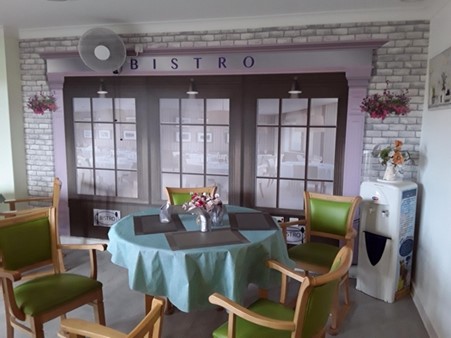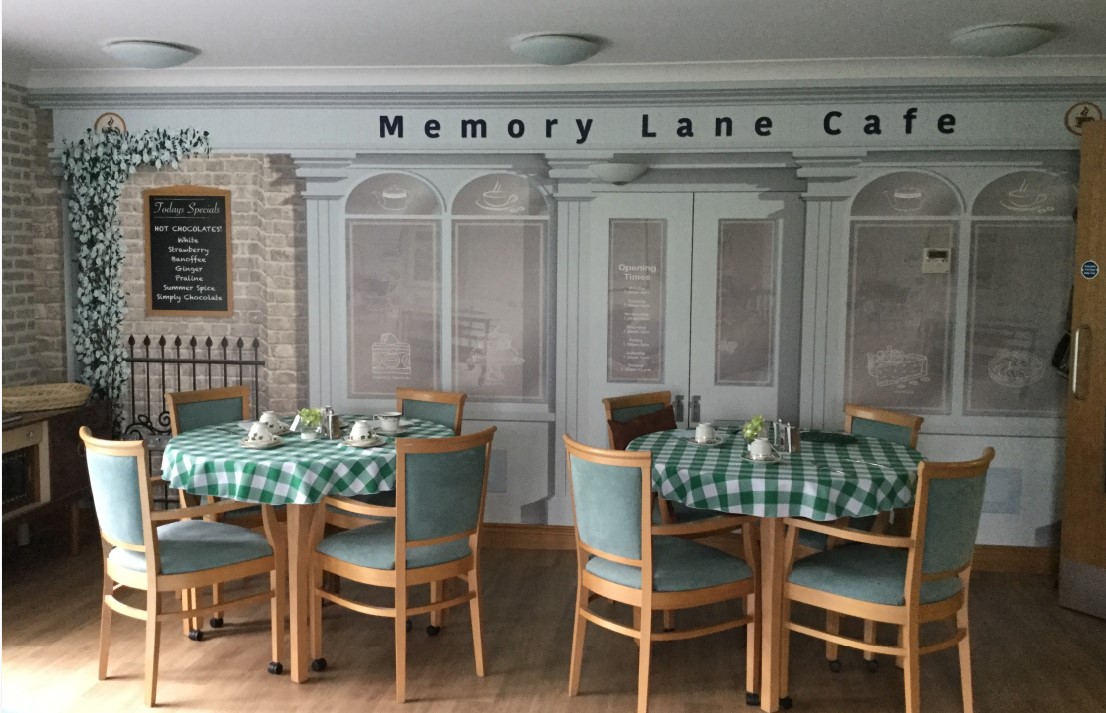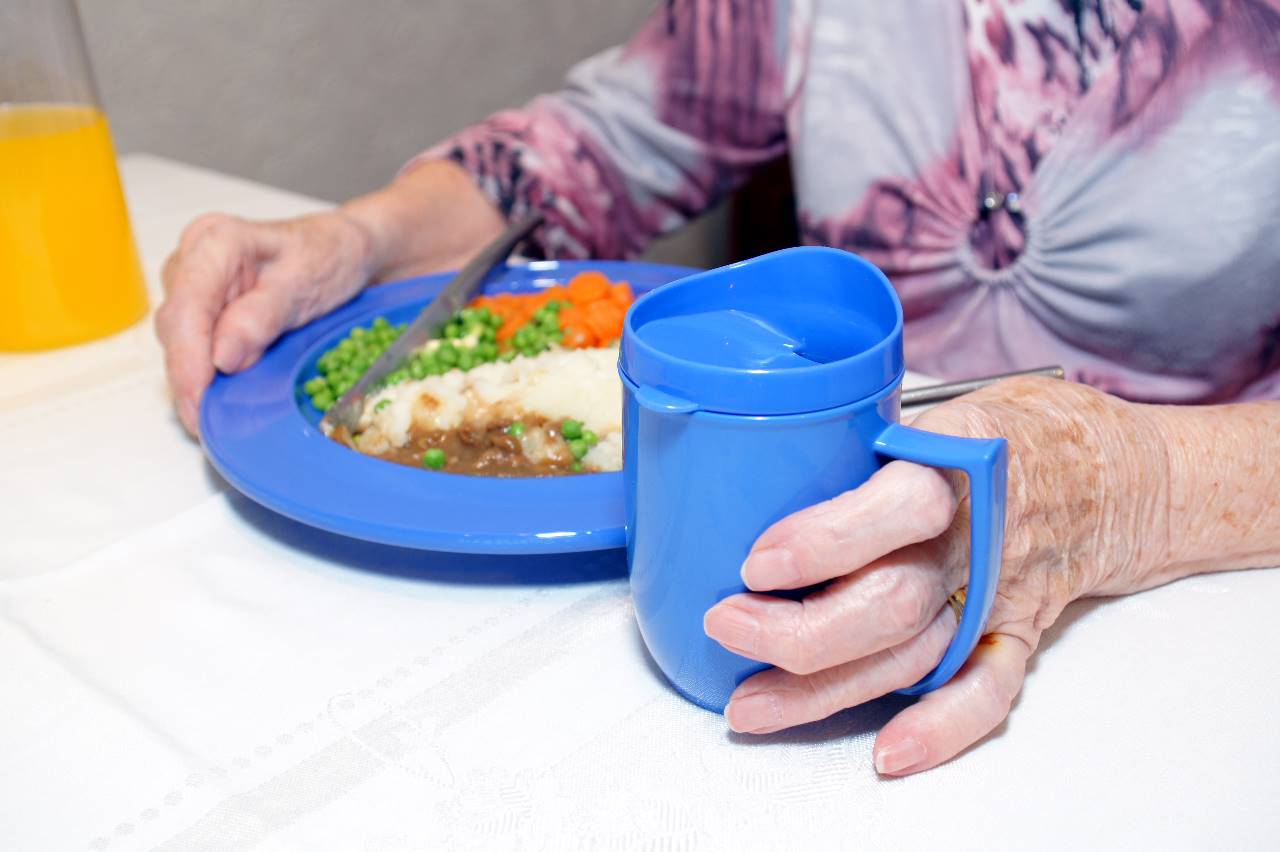- Have any questions? Call us on
- 0113 230 2046
- sales@findmemorycare.co.uk

For care home residents, mealtimes are very important. A good dining experience can help enhance social interaction, build a sense of community and increase nutritional intake – all of which contribute to a person’s mental and physical well-being.
First impressions
It’s not just what you eat, but where you eat. A welcoming and comfortable environment, with calming décor, is an important first step in creating a positive dining experience.
Making the dining area as appealing to the senses as possible with familiar sounds, smells and food can help make eating an enjoyable social activity.
Keep the room well-lit to avoid any shadows or glares that could cause distress. Use clear signage to highlight designated eating areas, and consider the background noise.
Making the dining room a welcoming and inviting space can really help with the care home meal experience.
Some older people, particularly those with dementia, need help and encouragement to eat during mealtimes. Remember that residents’ appetites and the speed at which they’ll be comfortable eating will vary for everyone. Using crockery and glassware that aids the person with dementia to eat and drink more can help reduce waste, improve nutritional intake, improve hydration, keep food warm for longer and reduce spillage.
Below are some testimonials from care homes to support the use of the right crockery
Blue crockery – Coloured crockery is proven to support dining when a person loses their ability to distinguish between colours. One resident became very agitated at mealtimes and often threw his plate in anger. When the care home introduced blue crockery, this resident could see the food on his plate and the agitation disappeared totally, enabling the resident to eat his dinner. This resident had seen other people were eating but thought his own plate was empty.
Blue plates – One gentleman resident never ate mashed potatoes, however when blue plates were used, he cleared his plate. Again, he could see the food and therefore was able to eat it.

A well-presented table is an important part of the dining experience. Good quality table linen, a small vase of flowers, fresh water all contributes to the overall look of the room.
The menu
Having a menu board lets people know what to expect and helps them to be clear about what they’re choosing to eat. Remember that not everyone will be familiar with the same dishes, so having a description of the food or better still visuals of the food can be helpful.
Encouraging interaction
Each mealtime offers a valuable opportunity for social interaction. Arranging tables with people grouped together in small groups can encourage interaction.

People living with dementia experience difficulties with their sight and their perception. This may cause them to misinterpret their surroundings. Switching from white plates to blue plates will help patients with dementia improve their eating, and as a result, their nutritional intake.
It follows research by the Dementia Centre at the University of Stirling which revealed that changing white plates for blue ones meant that people living with dementia could see the food they were eating stand out – including chicken, mashed potatoes, porridge, white bread and other typically pale-coloured favourite foods – and as a result, the average intake rose by half a pound a day.
Find Memory Care
3 Modder Avenue
Armley
Leeds
LS12 3DB
© Copyright 2021 Find Signage Ltd – Registration number is 06825901.
Find Memory Care
We firmly believe that the internet should be available and accessible to anyone, and are committed to providing a website that is accessible to the widest possible audience, regardless of circumstance and ability.
To fulfill this, we aim to adhere as strictly as possible to the World Wide Web Consortium’s (W3C) Web Content Accessibility Guidelines 2.1 (WCAG 2.1) at the AA level. These guidelines explain how to make web content accessible to people with a wide array of disabilities. Complying with those guidelines helps us ensure that the website is accessible to all people: blind people, people with motor impairments, visual impairment, cognitive disabilities, and more.
This website utilizes various technologies that are meant to make it as accessible as possible at all times. We utilize an accessibility interface that allows persons with specific disabilities to adjust the website’s UI (user interface) and design it to their personal needs.
Additionally, the website utilizes an AI-based application that runs in the background and optimizes its accessibility level constantly. This application remediates the website’s HTML, adapts Its functionality and behavior for screen-readers used by the blind users, and for keyboard functions used by individuals with motor impairments.
If you’ve found a malfunction or have ideas for improvement, we’ll be happy to hear from you. You can reach out to the website’s operators by using the following email
Our website implements the ARIA attributes (Accessible Rich Internet Applications) technique, alongside various different behavioral changes, to ensure blind users visiting with screen-readers are able to read, comprehend, and enjoy the website’s functions. As soon as a user with a screen-reader enters your site, they immediately receive a prompt to enter the Screen-Reader Profile so they can browse and operate your site effectively. Here’s how our website covers some of the most important screen-reader requirements, alongside console screenshots of code examples:
Screen-reader optimization: we run a background process that learns the website’s components from top to bottom, to ensure ongoing compliance even when updating the website. In this process, we provide screen-readers with meaningful data using the ARIA set of attributes. For example, we provide accurate form labels; descriptions for actionable icons (social media icons, search icons, cart icons, etc.); validation guidance for form inputs; element roles such as buttons, menus, modal dialogues (popups), and others. Additionally, the background process scans all the website’s images and provides an accurate and meaningful image-object-recognition-based description as an ALT (alternate text) tag for images that are not described. It will also extract texts that are embedded within the image, using an OCR (optical character recognition) technology. To turn on screen-reader adjustments at any time, users need only to press the Alt+1 keyboard combination. Screen-reader users also get automatic announcements to turn the Screen-reader mode on as soon as they enter the website.
These adjustments are compatible with all popular screen readers, including JAWS and NVDA.
Keyboard navigation optimization: The background process also adjusts the website’s HTML, and adds various behaviors using JavaScript code to make the website operable by the keyboard. This includes the ability to navigate the website using the Tab and Shift+Tab keys, operate dropdowns with the arrow keys, close them with Esc, trigger buttons and links using the Enter key, navigate between radio and checkbox elements using the arrow keys, and fill them in with the Spacebar or Enter key.Additionally, keyboard users will find quick-navigation and content-skip menus, available at any time by clicking Alt+1, or as the first elements of the site while navigating with the keyboard. The background process also handles triggered popups by moving the keyboard focus towards them as soon as they appear, and not allow the focus drift outside it.
Users can also use shortcuts such as “M” (menus), “H” (headings), “F” (forms), “B” (buttons), and “G” (graphics) to jump to specific elements.
We aim to support the widest array of browsers and assistive technologies as possible, so our users can choose the best fitting tools for them, with as few limitations as possible. Therefore, we have worked very hard to be able to support all major systems that comprise over 95% of the user market share including Google Chrome, Mozilla Firefox, Apple Safari, Opera and Microsoft Edge, JAWS and NVDA (screen readers).
Despite our very best efforts to allow anybody to adjust the website to their needs. There may still be pages or sections that are not fully accessible, are in the process of becoming accessible, or are lacking an adequate technological solution to make them accessible. Still, we are continually improving our accessibility, adding, updating and improving its options and features, and developing and adopting new technologies. All this is meant to reach the optimal level of accessibility, following technological advancements. For any assistance, please reach out to
